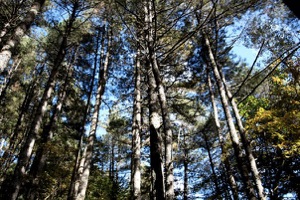Species-level parameterisation of a global dynamic vegetation model

Species parameterisation of the Sheffield Dynamic Global Vegetation Model (SDGVM) was carried out as part of several different projects at the NERC Centre for Terrestrial Carbon Dynamics (CTCD) at the University of Sheffield.
In an attempt to increase the accuracy of vegetation model simulations for particular regions (for example, the United Kingdom, Europe or Siberia), it is necessary to find representative values to describe the vegetation parameters used in the models. For example, specific leaf area (SLA) clearly differs between functional types (eg. needleleaf and broadleaf trees), therefore this parameter is given a different value for each functional type. However, if we are to parameterise the model to represent Siberian land cover with greater accuracy, we need to know if SLA differs appreciably between species within these functional types. For example does this parameter differ between Siberian fir (Abies sibirica) and Siberian cedar (Pinus sibirica), or between downy birch (Betula pubescens) and aspen (Populus tremula)?
The parameterisation of vegetation models requires assessment of a large amount of data and necessarily involves the reduction of complex ecological and physiological parameters to averages. In an ideal world, variation in each parameter would be assessed in the natural environment to give an estimate of variability for each average value.
In all cases, when using a single value of a parameter to represent a species or functional type it is important to remember the degree of variation that it conceals. Many important leaf parameters may vary two to five-fold within a canopy. Significant variation may occur with growing conditions, plant variety, altitude, latititude, and the date on which the parameter is measured.
It is clear that species parameterisation of vegetation models involves a gross-but-essential simplification of natural systems. Consequently, variation in the model parameters themselves must be considered as a possible source of error in model predictions. Parameterisation must therefore go hand-in-hand with analysis of the sensitivity of the model to such variation.
Related publications
Jump AS (2004). Species parameterisation of SDGVM for project ‘Siberia II’. Report to: SCEOS/CTCD, Department of Applied Mathematics, University of Sheffield, UK.


Unfortunately this isn’t often feasible in cases where models are used to represent a diversity of species, or vegetation types covering broad geographic areas. In such cases it is necessary to attempt to determine average values from a variety of sources, both published (eg. research papers, textbooks, forestry and crop manuals, web-based databases) and unpublished (eg. unpublished datasets and the vast reserve of knowledge held by individual foresters/ecologists/physiologists).